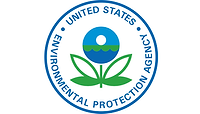EPA’s New Approach to Risk Management for Chemicals Under Toxic Substances Control Act (TSCA)

On May 3, the United States Environmental Protection Agency (EPA) published its proposed risk management rule for methylene chloride, a solvent used in a wide variety of paint and coatings removal products, to address the unreasonable risks identified by EPA in its risk evaluation prepared under Section 6(a) of the amended Toxic Substances Control Act (TSCA). Methylene chloride is one of the chemicals in a group of 10 that EPA has evaluated and has determined poses an unreasonable risk to human health for certain conditions of use. Methylene chloride was the first solvent on which EPA proposed to take action under the amended TSCA. Nonetheless, EPA quickly moved to publish proposed risk management rules for several other chemicals in its group of 10—namely, perchloroethylene (PCE) on June 16, carbon tetrachloride (CTC) on July 28, and trichloroethylene (TCE) on October 31. EPA has identified uses of all of these chemicals in the coatings industry.
For instance, the proposed rule for methylene chloride primarily focuses on industrial uses (since consumer uses for paint and coating removal were banned in 2019), which includes use of methylene chloride (1) in paints or coatings applied to surfaces, usually to enhance properties such as water repellency, gloss, fade resistance, ease of application, or foam prevention, etc., and (2) applied to surfaces to remove paint, coatings, and other finishes and to clean the underlying surface, including furniture refinishing. PCE is added to paints and coatings prior to further distribution to enhance properties and is incorporated into coatings products, such as maskant and elastomer-based coatings that protect a substrate during exposure to a chemical process (chemical milling, plating, and anodizing). CTC is used as a processing aid in the manufacturing of chlorinated compounds, which are subsequently used in the formulation of paints and coatings. Lastly, TCE is used as a diluent in solvent-based paints and coatings, as well as in arts, crafts, and hobby materials in fixatives and finishing spray coatings.
Taken collectively, these proposed rules serve as a roadmap for the risk management rules EPA will propose for existing chemicals in the future. The proposed rules also reveal—for the first time—how EPA interprets its obligations for managing the “unreasonable risk” of existing chemicals under Section 6(a) of the amended TSCA. For paints and coatings in particular, the proposed rules will have significant implications on industry operations due to the many conditions of use and applications of these chemicals that EPA plans to regulate.
Overview of TSCA Section 6
TSCA Section 6, as revised in 2016, requires that EPA systematically prioritize existing chemicals, evaluate their risks, and, when identified, issue risk management rules to mitigate identified unreasonable risks of injury to health or the environment. Moreover, EPA is obligated to complete each step within certain statutorily established time frames, but there have been significant delays which EPA has stated are due to a lack of adequate resources.
Starting with step 1, prioritization, EPA first announces its intent to put a chemical through the prioritization process, and at that point, the 9- to 12-month statutory timeframe begins, during which EPA must screen candidate chemicals and designate them as either high- or low-priority. Low-priority determinations are final agency actions and do not warrant further evaluation by EPA. High-priority chemicals move to step 2. For step 2, risk evaluation, EPA has up to 3.5 years (which includes an allowed six month extension) to evaluate a high-priority chemical and determine whether certain conditions of use present an unreasonable risk to health or the environment. If it makes such a determination, EPA must proceed to step 3, risk management. Once EPA publishes its final risk evaluation, the Agency has one year to issue a proposed risk management rule and two years to issue a final rule (with an allowable two-year extension).
Under TSCA Section 6(a), EPA has the authority to impose a wide variety of restrictions and obligations on the use and management of existing chemicals to address unreasonable risks, including prohibitions or restrictions on the manufacture, processing, use, distribution, or disposal of a substance; concentration limits for the substance; warnings or use instructions; testing; recordkeeping; and notification requirements. Nonetheless, Section 6(a) requires that EPA take into account the following considerations when it proposes a risk management rule for an existing substance: the health effects and magnitude of exposure of the chemical; environmental effects; benefits of the chemical; and the reasonably ascertainable economic consequences of the rule. Importantly, Section 26 of TSCA imposes on EPA broad obligations to use the best available science, including when conducting risk evaluations and proposing risk management rules.
EPA Has Changed its Approach for the “First 10” Chemicals
By December 2016, EPA had identified its first 10 chemicals and completed its risk evaluations for most of the chemicals by 2020. But in 2021, EPA revised the risk determinations to apply the Biden Administration’s new policies, which, in effect, made the analyses in its risk determinations more broad. For example:
- EPA shifted to the “whole chemical” approach, making risk determinations on a substance-wide basis rather than determining risk for each condition of use (EPA’s prior “use-by-use” approach). The most recent proposed risk management rules reference this policy change. EPA concludes that the substances, as evaluated in the risk evaluations as a whole present unreasonable risks of injury to health.
- The Agency no longer assumes that workers wear personal protective equipment (PPE) when exposed to chemical substances in the workplace. Removing this assumption means that, even if wearing PPE would eliminate any risk of exposure to a chemical, EPA would still consider workplace exposures to the chemical as an “unreasonable risk,” resulting in more uses with more findings of unreasonable risk than the original 2020 risk determinations.
- Additional exposure pathways, such as air and water, have been added to EPA’s considerations in its risk evaluations to account for potential exposures to fenceline communities. Indeed, EPA has supplemented some of the original risk evaluations (conducted by the Trump Administration) by adding such considerations.
The New Risk Management Roadmap
Each of EPA’s proposed risk management rules include detailed worker chemical protection programs (WCPP), which are akin to an Occupational Safety and Health Administration (OSHA) workplace standard, as well as an existing chemical exposure limit (ECEL) to limit airborne exposures. EPA has also included broad prohibitions on various manufacturing, processing, distribution, disposal, and use activities (commercial, industrial, and consumer). For the ECELs, as shown in the table below, EPA has proposed workplace exposure limits that are well below the OSHA Permissible Exposure Limits (PELs). And notably, for some of these chemicals, portable passive sampling devices do not exist to allow for real-time monitoring at such low levels. Thus, companies may want to evaluate whether their existing monitoring approaches are capable of measuring to the levels of the proposed ECELs if EPA were to finalize them.
|
|||||||||||||||||||
For the uses that are not expressly prohibited, EPA has proposed WCPPs that all contain similar elements, including: stringent exposure monitoring requirements (e.g., initial and periodic monitoring), requirements to reduce exposures based on the National Institute of Occupational Safety and Health (NIOSH) hierarchy of controls, respirator selection criteria, dermal protection requirements, and recordkeeping requirements. While EPA has indicated an intent to align with OSHA requirements, its proposed rules reveal that EPA seeks to go even further, as there are significant differences between OSHA’s requirements and EPA’s proposals, and the regulated community should pay close attention.
Upcoming Risk Management Rules
The table below shows the expected timelines for the first 10 chemicals that have completed the risk evaluation stage. As shown below, four of the proposed rules (the ones discussed in this article) have been released, and EPA anticipates proposing rules for other chemistries in late 2023 and early 2024.
|
||||||||||||||||||||||||||||||||||
Key Takeaways
The regulated industry has a lot at stake in the four risk management rules that EPA plans to finalize in 2024. While the comment periods for the methylene chloride, PCE, and CTC proposed rules have ended, opportunities remain for companies in the coatings industry to provide directly to EPA information that addresses key areas of uncertainty. EPA plans to release additional risk management proposals in the near future, with 1-Bromopropane and N-methylpyrrolidone (NMP) next on the list. For all the chemistries for which EPA has proposed and intends to propose rules, EPA is particularly interested in information within the last 20 years that presents, for example, personal breathing zone and/or area monitoring data; process emissions factors; descriptions of commercial worker activities and sources of exposure; product formulation; and any unpublished data that could be relevant.
The Agency has also said that uncertainty regarding whether the regulated community can comply with an ECEL or prevent workers’ direct dermal contact with a chemical “can influence whether a condition of use is considered to be a candidate for [a] [workplace chemical protection program (“WCPP”)] or whether [a] prohibition is more appropriate[.]” Thus, to the extent a company has data that supports certain procedures would eliminate any unreasonable risk, providing such data to EPA could persuade the Agency to implement a WCPP (as opposed to a complete ban), for example.
Companies should be aware that, if they do not provide data to EPA demonstrating their ability to meet EPA’s proposed ECELs for the particular conditions of use of a chemistry, EPA will likely take the position that the ECEL is not achievable for that condition of use and thus conclude that a prohibition is the most appropriate risk management approach.
EPA’s proposed rules extend into OSHA territory and layer new, more-stringent workplace standards on top of existing OSHA standards. Companies should consider the feasibility of EPA’s proposed WCPP requirements and proactively evaluate whether alternative chemistries exist if EPA finalizes a prohibition of an essential condition.. In addition, if a condition of use for their operations could be considered a “critical use” under TSCA Section 6(g), businesses should also consider advocating for a time-limited exemption.
It is likely that EPA will continue to be delayed in issuing its proposed risk management rules, just as it was for the first four of the “first 10” chemicals. Thus, industry likely has time to develop information to provide in its comments on the forthcoming proposed regulations.
Nancy B. Beck, PhD, DABT is Director of Regulatory Science; Javaneh S. Tarter is senior attorney; Gregory R. Wall is partner; Matthew Z. Leopold is partner; Paul T. Nyffeler, PhD is senior attorney; and Meredith Doswell is an associate with the law firm Hunton Andrews Kurth LLP. They can be reached via the firm’s website: https://www.huntonak.com.
Looking for a reprint of this article?
From high-res PDFs to custom plaques, order your copy today!






